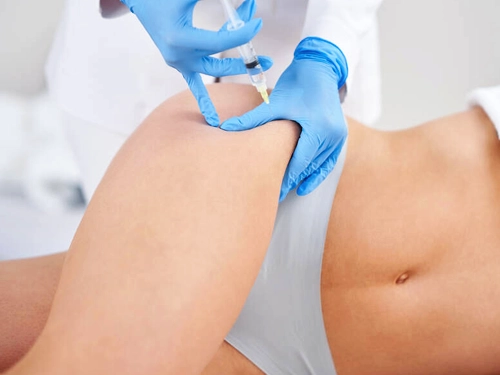
Laser lipolysis is the procedure of breaking down fat cells with the help of laser energy. While fat cells are broken down, capillaries in the surrounding tissue are also coagulated. Coagulation of the capillaries gives us the chance of less bleeding and faster recovery after the procedure. During laser lipolysis, collagen production is stimulated in the surrounding tissue and skin tightening is achieved.
Thanks to the remodeling process during laser lipolysis, regional sharpening becomes easier. The broken fat is usually taken out of the body by liposuction.
Especially when working on large areas (abdomen, love handles, back),it is most appropriate to vacuum the broken fat out by liposuction instead of leaving that burden in the body. This process is called "Laser Liposuction".
No, they cannot. Becausethese fats have lost their cellular integrity with the effect of laser energy. If the removed fats are planned to be used again (for the purpose of breast augmentation, butt lift, facial fillers),“Vaser Liposuction” is preferred.
Laser lipolysis cost is one of the issues which are mostly searched by those considering this procedure. Laser lipolysis cost varies depending on the number and size of the areas to be intervened. The hospital where laser lipolysis will be performed and the device which will be used during the procedure are among the factors that change the cost.
Additional surgical interventions (such as tummy tuck, breast aesthetics) also change the cost of laser lipolysis.
The laser energy works on the application area with a few mechanisms.
As is seen, laser energy works on the fat cells with more than one mechanism. Laser lipolysis does not only break down fat cells but also shows a tightening effect on the surrounding connective tissue (collagen).
The skin appearance which looks likean orange peel or mattress is called cellulite, which is frequently seen in women. Cellulite treatment is an issue that needs to be addressed comprehensively. By laser lipolysis accompanied with superficial liposuction, the bands on the skin causing cellulite are broken down. It can also be supported with cell therapies.
Thermal damage (burns on the skin) has been reported with laser lipolysis, especially performed with improper devices and by inexperienced physicians. There are thermal probes that measure the intra-tissue heat instantaneously in the devices we use. When the temperature inside the tissue increases, the device both gives a sound warning and turns itself off automatically. In addition, the sensitivity of the device can be adjusted according to the thickness of the skin in the application area, for example, laser energy can be given at lower temperatures in a thin skin area such as the back of the leg.
Devices that use Nd-Yag and Diode wavelengths of different manufacturers such as Fotona XP, Deka Smartlipo, Palomar, and Cynosure Smartlipo have been used for laser lipolysis until today. Commonly used 1064nm wavelength is effective on vein and partially fat. However, "Smartlipo Triplex", which uses 3 wavelengths in the form of double shots, is by far the best one.
In the Smart lipo Triplex device, wavelengths of 1064nm (vein and fat),1440nm (maximum effect on fat),1320nm (tightening effect) are available in the same device. Another distinguishing feature of the Smartlipo Triplex is its probes containing an internal temperature sensor. In other words, when approaching the upper-temperature limit,we set in the tissue, it gives a warning with sound, and the device automatically stops itselfwhen it reaches the specified temperature.Therefore, there is almost no burn risk.